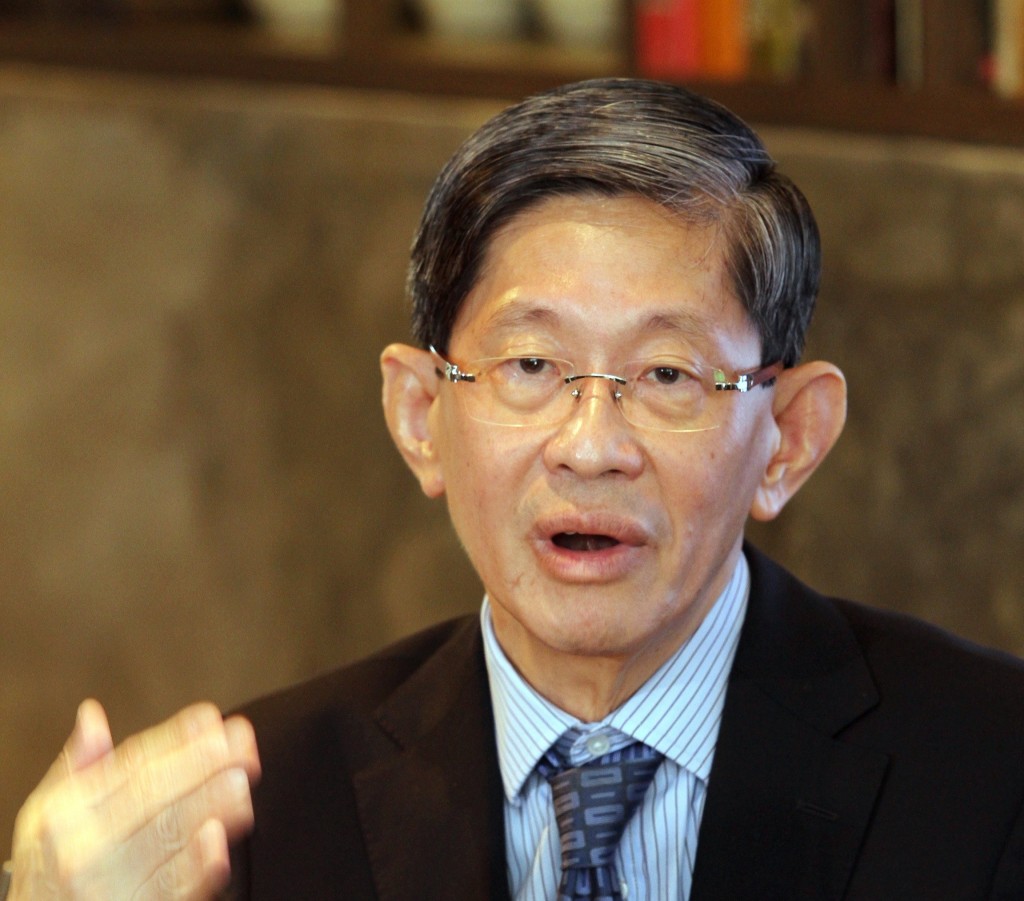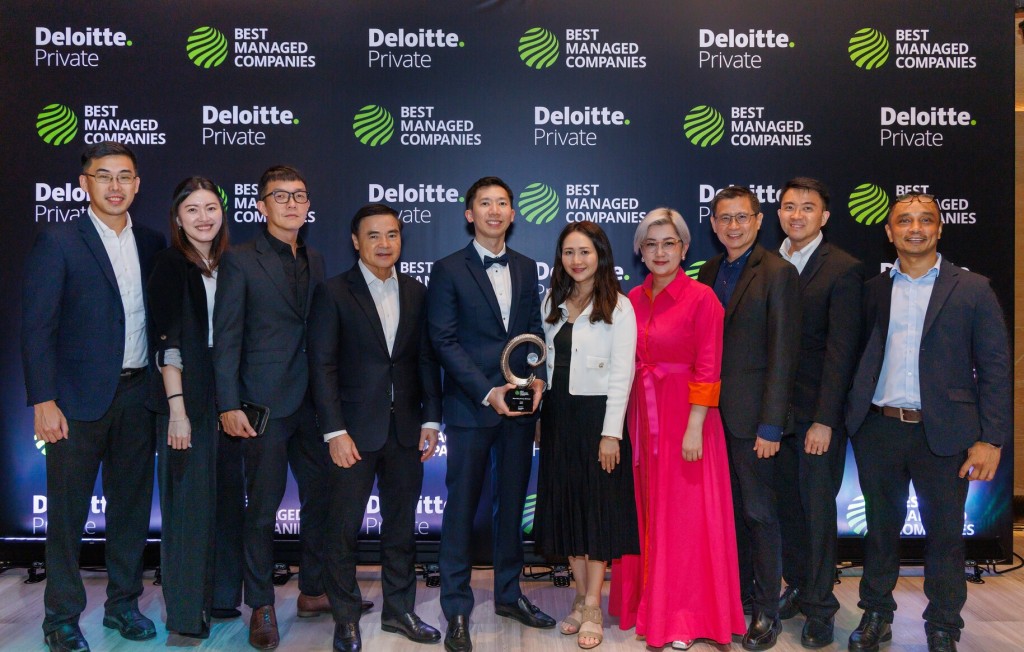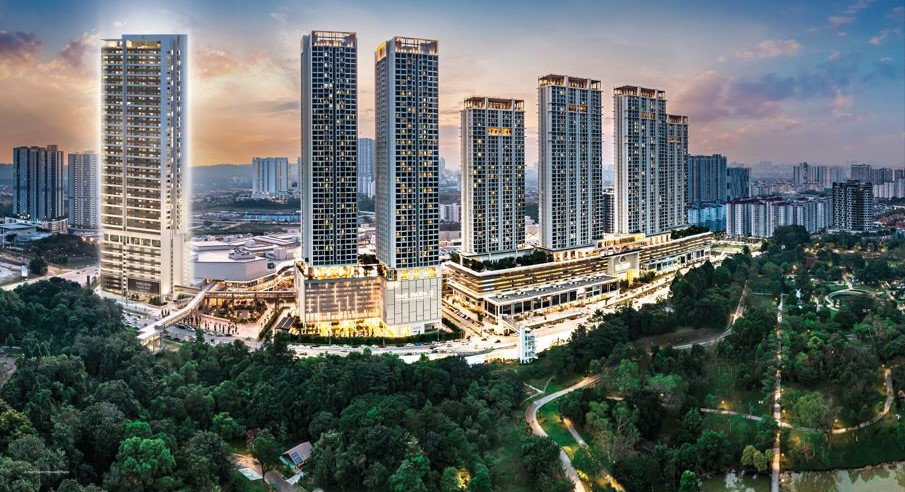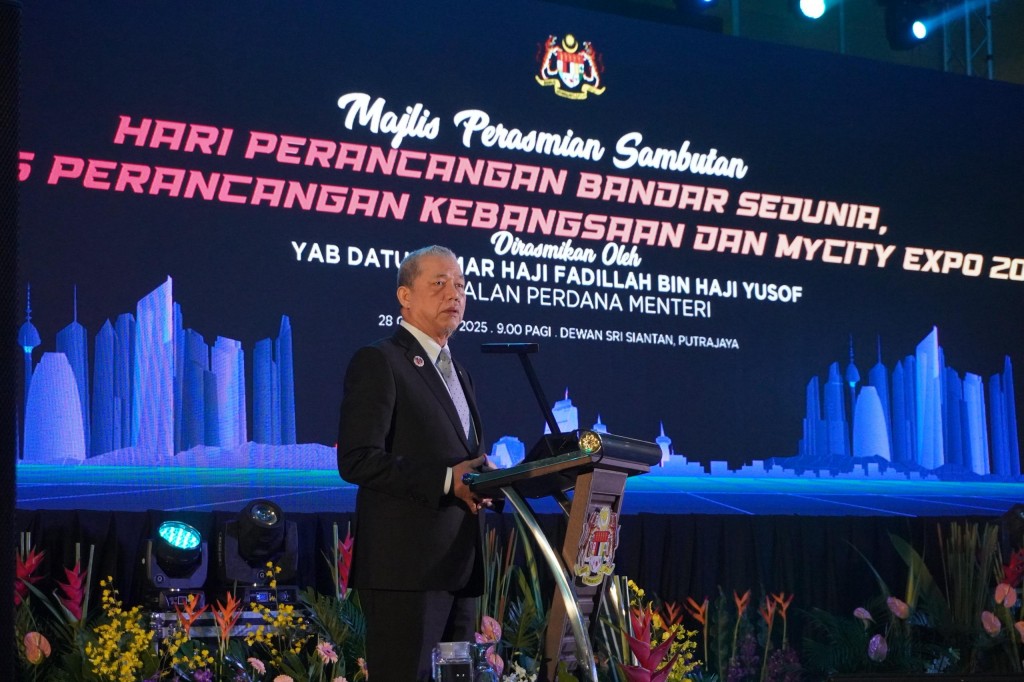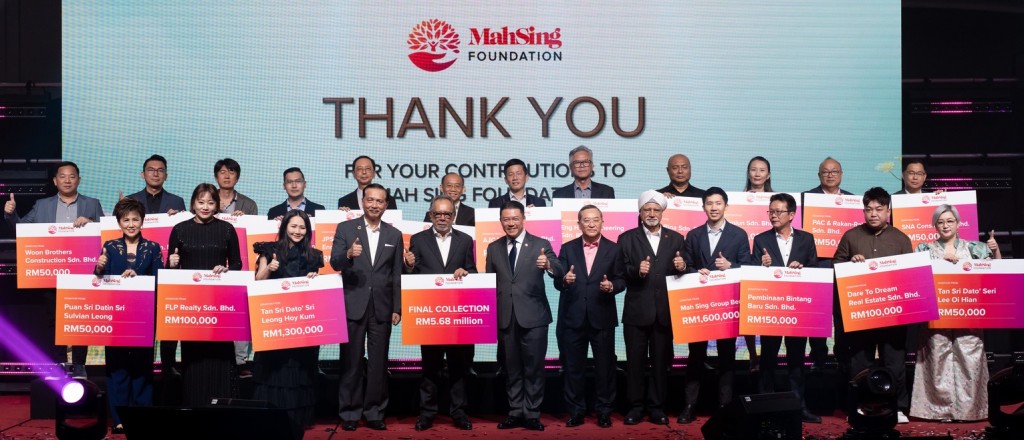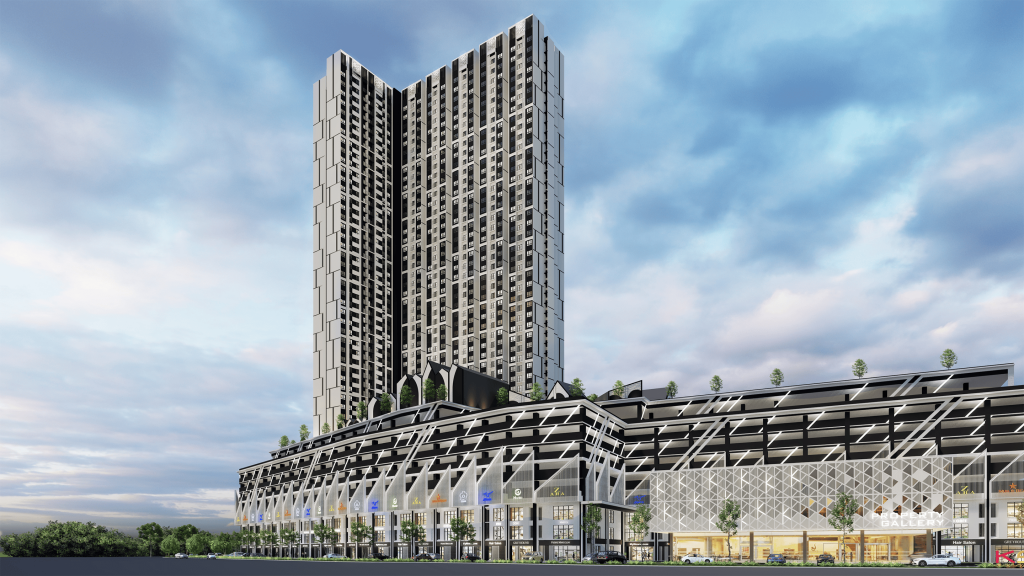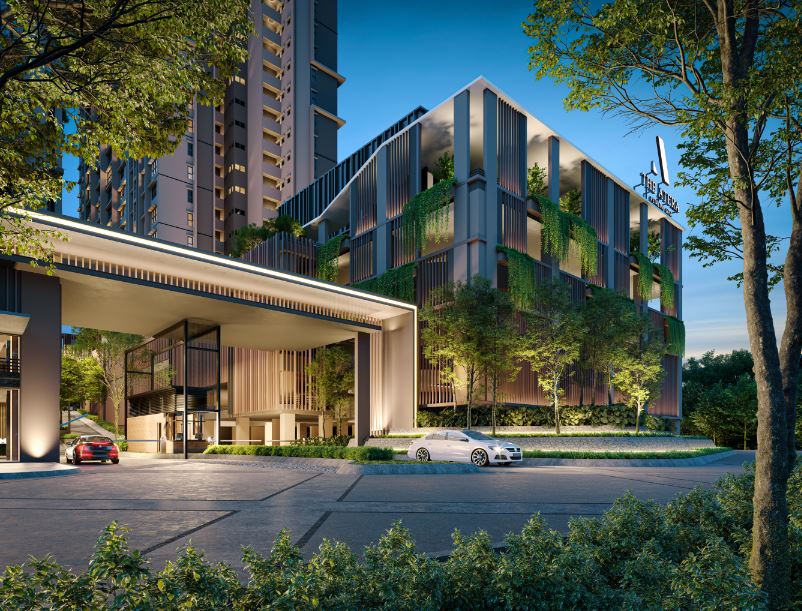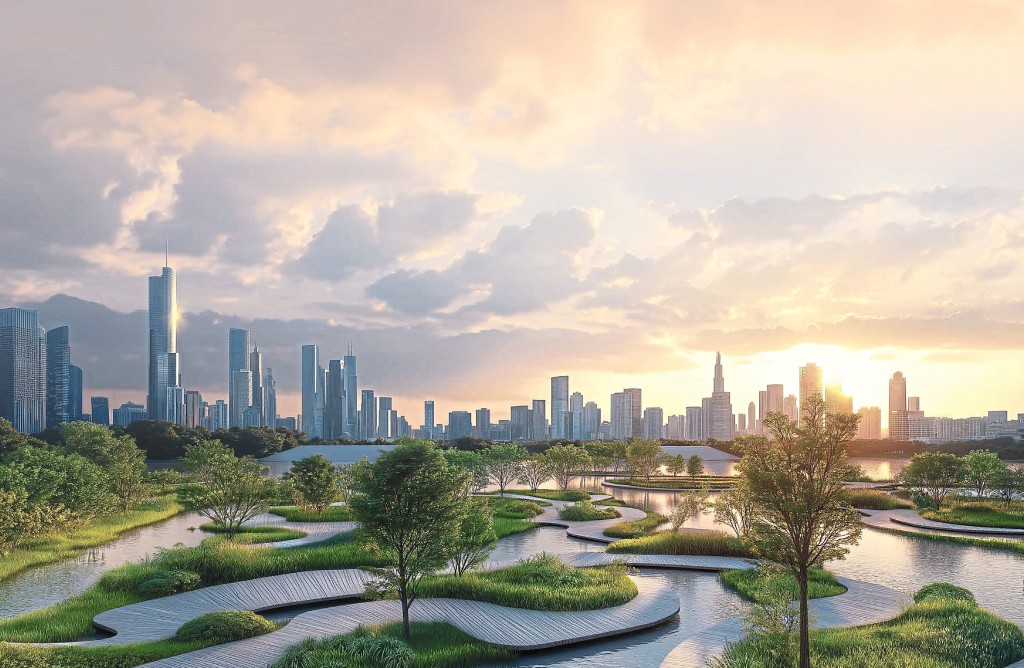
Onn Hafiz explaining JS- SEZ updates to The Star news editor Nelson Benjamin. — THOMAS YONG/The Star
Datuk Onn Hafiz gives an exclusive insight into the latest progress
By Nelson Benjamin
The newly established Johor-Singapore Special Economic Zone (JS-SEZ) has sparked significant excitement on both sides of the Johor Causeway since its launch early this year. Johor Menteri Besar Datuk Onn Hafiz Ghazi, a key proponent of this transformative initiative, speaks with The Star’s news editor Nelson Benjamin about the project's vision, progress and major milestones.
Datuk, you have been one of the key drivers of the JS-SEZ from the beginning. How do you see the progress so far?
The progress we’ve made with the JS-SEZ reflects a much larger vision — one set by Johor Regent Tunku Ismail Ibni Sultan Ibrahim, who has consistently outlined the ambition to make Johor a thriving state economy as well as a fully developed state by 2030. His Royal Highness has not only set a bold direction but has been intimately involved in ensuring its delivery.
In His Royal Address during the recent state assembly sitting, DYAM Tunku touched on key focus areas including the economy, education, infrastructure, healthcare, poverty eradication, housing, tourism, environment, youth development and the civil service. These are not abstract ideals, they are the very pillars underpinning the JS-SEZ strategy. The success we see today is a result of the clear, focused leadership of His Royal Highness, whose commitment gives strength and legitimacy to everything we do.
The progress of the Johor–Singapore Special Economic Zone (JS-SEZ) has exceeded early expectations. Since the formal signing of the Memorandum of Understanding in January 2024 and the agreement in January 2025, we have transitioned rapidly from planning to execution. Johor has not only activated its institutional machinery, like setting up the Invest Malaysia Facilitation Centre Johor (IMFC-J) in Forest City, but has also begun real policy delivery, including fast-track immigration clearance, the QR code pilot at border checkpoints and alignment of incentives with national bodies like MITI, MIDA, SC, MDEC and IRDA.
What’s more important is the signal of confidence we’re seeing from investors. In Q1 2025 alone, Johor recorded RM30.1bil in approved investments—a dramatic increase compared to RM4.1bil in Q1 2024. This 634% year-on-year surge strongly suggests that the formalisation of the JS-SEZ has had a catalytic effect on investor sentiment. Close to 90% of these investments were located within the JS-SEZ footprint, confirming that the zone has become a magnet for capital inflows into the state, spanning advanced manufacturing, logistics, green tech and financial services. We are at the top in terms of investments in Q1 2025.
The JS-SEZ, a joint initiative between Malaysia and Singapore, is designed to leverage the complementary strengths of both nations — Singapore’s financial and technological prowess with Johor’s scale, talent and industrial base. Already, it has become the primary destination for new investments into Johor. Of course, there is still more to be done. As we move from groundbreaking to groundwork, our focus is shifting to operational readiness—ensuring the infrastructure, talent pool and digital systems are in place. But what the early data tells us is this: The JS-SEZ is no longer just a concept. It is shaping investor behaviour, redirecting capital flows and laying the foundation for Johor’s next economic ascent.
Datuk, can you share some of the milestones or successes of the JS-SEZ in terms of data or investments secured or enquiries from potential investors?
One of the key milestones that has been achieved is the establishment and operationalisation of the Invest Malaysia Facilitation Centre Johor (IMFC-J). Opened in February 2025, this one-stop centre has transformed how we interact with investors. It is not just a coordinating body, it is the war room for all major investments into Johor.
IMFC-J has received over 439 enquiries from parties interested in learning more about the JS-SEZ. Of these, 57 are considered potential investment leads, as they specifically relate to interest from both local and international investors. These enquiries span key sectors such as advanced manufacturing, logistics, the digital economy and green technology. This level of interest reflects strong confidence in the JS-SEZ’s potential as a high-impact investment hub.
IMFC-J and its Singapore counterpart (under the Ministry of Trade and Industry) have received active expressions of interest from firms based in Singapore, the United States, Japan, Germany and several Gulf countries. During the JS-SEZ Business Forum held in Mandarin Oriental Hotel, Kuala Lumpur on May 19, 2025, Maybank alone confirmed that its Singaporean clients want to invest more than S$709mil (RM2.35bil) in the JS-SEZ mostly in sectors like Fintech, healthcare and alternative energy.
These figures are not isolated. They correlate with the state’s official investment statistics. As noted, Johor secured RM30.1bil in approved investments in Q1 2025, seven times higher than the same period in 2024. What this tells us is that the JS-SEZ is not merely drawing attention, it is driving decisions. This early traction is the clearest indicator that the mechanisms we’ve put in place, like IMFC-J, digital border solutions and incentives, are working and should now be scaled further.

Johor Regent Tunku Ismail Ibni Sultan Ibrahim (fourth from left) during the launch of the Invest Malaysia Facilitation Centre - Johor (IMFC-J) in Forest City in Johor. Looking on are Onn Hafiz and Investment, Trade and Industry Minister Datuk Seri Tengku Zafrul Tengku Abdul Aziz.
You have always had a hands-on approach when it comes to the JS-SEZ. What else needs to be done to ensure that it is a continued success over the years?
Our approach to making the JS-SEZ a long-term success is simple but disciplined — we stick to three core principles: teamwork, going to the ground and micromanagement. This isn’t just our method; it is a direct response to the leadership philosophy of DYAM Tunku Mahkota Ismail, the Regent of Johor, who has consistently reminded us that vision without execution is just a hallucination. What we are doing now, what we are committed to is execution. Not headlines, not ceremonies but measurable delivery on the ground.
First, we solve problems as a team. We break down silos between Johor, federal and even cross-border agencies. Investment facilitation doesn’t sit in just one office—it’s a shared mission. From IRDA to MIDA, MITI and IMFC-J, we operate with a unified mindset: If there’s a problem, we resolve it together. That’s why at IMFC-J, we convene every agency at the same table, track bottlenecks and move forward as one. That’s the culture we’ve built in Johor — one of accountability and collaboration.
Second, we go to the ground. Literally. I make regular site visits, often unannounced — to RTS construction sites, CIQ upgrades and investor premises. This is not a symbolic gesture. If you want the truth, you have to get your hands dirty. Real credibility comes when you verify things yourself. For example, YB Lee (Johor investment, trade, consumer affairs and human resources committee chairman Lee Ting Han) and I have visited IMFC-J multiple times to track implementation firsthand. Most significantly, DYAM The Regent of Johor personally officiated the launch of IMFC-J at Forest City. That moment sent a powerful message to investors and public agencies: Johor’s leadership is not just supportive — it is fully involved. Execution begins with presence.
Third, we micromanage every milestone. We don’t just announce policies and wait. We work off a master action plan—with responsibilities assigned, timelines committed and success clearly defined. These tasks are reviewed weekly at the officer level and monthly at the strategic level. From land approvals to investment tracking to border solutions, we stay on top of every moving part. That’s why initiatives like the Johor Super Lane, which reduced land approval processing from 134 days to 62 days, happened—not by chance but by design. We never drop the ball. In Johor, ambition is only the beginning. Execution is what delivers results. That’s how the JS-SEZ will be remembered — not just as a concept but as a working model for the region.
When will the Master Plan of JS-SEZ be rolled out as many Single Family Office Vehicles (SFOVs) are still waiting for the guidelines from the Securities Commission for clarity purposes? Has there been a timeline that has been set for this?
The Johor-Singapore Special Economic Zone (JS-SEZ) Master Plan, which will include strategic planning for the Forest City Special Financial Zone (SFZ), is scheduled to be released by the fourth quarter of 2025. To support this, the Economy Ministry issued a Request for Proposal (RFP) on May 26, 2025, for the development of the Master Plan and Investment Blueprint. The RFP exercise concluded on June 10, 2025, with the next step being the appointment of a qualified consultant to undertake the formulation of the Master Plan.
In regards to Single Family Office Vehicles (SFOVs), on Sept 20, 2024, Finance Minister II announced the introduction of the SFO incentive scheme as part of the Forest City SFZ initiative.
As of now, no firm date has been announced for the publication of the SFO guidelines. However, the Securities Commission (SC) has informed us that the guidelines are in the final stages of being formalised and are expected to be released later this year.
To ensure continued momentum in the interim, the Finance Ministry has authorised the SC to approve SFO applications on a case-by-case basis. This means that interested single-family offices may approach the SC directly and approvals can be granted individually even before the official issuance of the guidelines.
To date, the SC has approved two SFO applications, namely CMY Capital Family Office and Yow Kee Family Office. These two offices serve as pioneer models under the incentive scheme and have agreed to be named publicly to help build investor confidence in Malaysia’s emerging SFO ecosystem.
Beyond these two, the SC and the Invest Malaysia Facilitation Centre – Johor (IMFC-J) have received more than 30 enquiries and applications from SFOs based in Malaysia, Singapore and China, but most prefer to maintain confidentiality at this stage.

"The progress we’ve made with the JS-SEZ reflects a much larger vision," said Onn Hafiz. — THOMAS YONG/The Star
Many of the JS-SEZ was done in collaboration with the Malaysian Economic Ministry. Now that Datuk Seri Rafizi Ramli has stepped down as the minister, do you expect any delays or hiccups?
From the outset, the JS-SEZ has been designed as a long-term, institutional initiative, one that transcends any individual minister or administration. As Datuk Seri Rafizi himself stated, this is a policy built for the future, not for a single term. The foundations are already in place and both the federal government and the Johor state government remain fully committed to its successful implementation. Prime Minister Datuk Seri Anwar Ibrahim has also been very clear that the government remains stable and fully operational.
This is a whole-of-government initiative, not the vision of one person. The JS-SEZ is a national and state agenda, jointly driven by Malaysia and Singapore, supported at the highest levels of both governments. It is anchored by joint steering committees and inter-agency task forces involving permanent secretaries and senior officials from both countries. In Malaysia alone, more than 10 ministries and agencies including the Ministry of Economy, MITI, MOF, MIDA, IRDA, MDEC, MOT, Mosti and the Foreign Ministry have been instrumental in operationalising the JS-SEZ.
A key coordination platform is the Invest Malaysia Facilitation Centre – Johor (IMFC-J), which remains fully operational. IMFC-J serves as a one-stop centre to expedite investment approvals, resolve regulatory bottlenecks and align multi-agency processes in support of JS-SEZ investors. It is structured to function independently of ministerial changes, ensuring institutional continuity on the ground in Johor.
Under the JS-SEZ, the incentives are mainly for the manufacturing sector while the services sector contributes more to the GDP and creates more jobs for the downstream economy. Will there be incentives given to the services sector?
Johor’s services sector is indeed a powerhouse of our economy, contributing a significant majority of Johor’s GDP and generating extensive employment, especially in downstream and high-skilled jobs. In recognition of this, we have introduced a comprehensive suite of incentives aimed at catalysing growth in financial and high-value service sectors within the JS-SEZ.
Under MDEC’s Forest City SFZ guidelines, qualified fintech companies, global business services (GBS) centres and foreign payment operators are eligible for a 5% corporate tax rate for up to 20 years. In parallel, MIDA has introduced incentives offering the same 5% tax rate for approved Global Services Hubs, as well as for companies relocating R&D, design, testing, or specialised service functions into Johor. For modern logistics and supply chain services, we are offering a 100% Investment Tax Allowance for five years on qualifying capital expenditure, which can be used to offset up to 100% of statutory income.
Additionally, the SFOVs can benefit from a 0% tax rate under the Forest City SFZ, another first for Malaysia’s financial services landscape. Beyond this, financial institutions setting up in the zone may access special deductions on relocation costs, enhanced industrial building allowances and streamlined regulatory approvals.
These measures demonstrate our clear commitment to making services alongside manufacturing a pillar of economic growth in Johor. With our strategic location, skilled talent pool and supportive policy environment, we are positioning the JS-SEZ as a regional hub not only for manufacturing but also for innovation, finance, logistics and professional services.

Mercedes-Benz global parts logistic operations head Klaus Ziemsky (left in blue suit) with Onn Hafiz (right) touring the Mercedes-Benz regional logistics centre at Senai Airport City in Kulai, Johor. — THOMAS YONG/The Star
Presently, there is a lot of uncertainty following the United States tariff issues which are affecting global trade. Do you see this as an advantage for the development of the JS-SEZ? If yes, why?
Absolutely. While global trade tensions including the recent tariff measures introduced by the United States have added a layer of uncertainty to the global economy, I see this as a timely and strategic opportunity for the JS-SEZ to position itself as a preferred investment destination in the region.
Average US tariff rates on imports are significantly higher for countries like Cambodia (49%), Laos (48%), Vietnam (46%), Myanmar (44%), Thailand (36%), Indonesia (32%) and China (34%). Even though Singapore’s rate is just 10%, Malaysia still stands out with a low tariff rate of 24%, making it a comparatively favourable trade partner for American and global businesses.
When combined with Malaysia’s inherent cost advantages, such as competitive utility prices, reliable infrastructure and an abundant skilled workforce, this creates a compelling value proposition for companies looking to diversify supply chains and mitigate trade-related risks.
The JS-SEZ was developed with resilience at its core. It focuses on eleven key sectors, including logistics, financial services, tourism, education and the digital economy, enabling us to withstand external shocks and adapt swiftly. This sectoral breadth is one of our greatest strengths in navigating global trade realignments. We are already seeing clear, positive outcomes. Demand from international companies particularly from the United States, Singapore, Netherlands, Japan, China and Australia continues to grow across these sectors.
The upcoming Nikkei Forum in Medini on June 18 and 19 clearly portrays how global corporations are fleeing the supply-chain squeeze and actively seeking China-plus-One solutions. The JS-SEZ offers a compelling answer to this trend. Investors benefit from Johor’s land and labour affordability, close proximity to Singapore’s advanced tech ecosystem and regulatory excellence and a world-class logistics framework.
Another pillar of our resilience is talent development. Through the Johor Talent Development Council (JTDC), we are actively upskilling our workforce to meet the evolving demands of international investors. I’ve always believed that a future-ready, well-trained workforce empowers Johor to turn crises into opportunities. Amid global uncertainties, it is talent that determines long-term competitiveness.
Additionally, Johor’s logistics infrastructure further enhances the JS-SEZ’s appeal. With three major seaports, Port of Tanjung Pelepas (PTP), Johor Port and Tanjung Langsat Port, and Senai International Airport, Johor is seamlessly connected to global trade routes. This strategic connectivity is invaluable in today’s disrupted supply chain environment.
You are also the co-chairman of the Iskandar Development Authority (IRDA) together with the Prime Minister. With the JS-SEZ, will Iskandar Malaysia’s status as an economic corridor be affected? If not, why do you think so?
The short answer is no. The JS-SEZ is designed to reinforce, not replace, Iskandar Malaysia’s status as Johor’s core economic corridor. Since 2006, Iskandar Malaysia has attracted over RM297bil in cumulative investments and supported nearly 700,000 jobs . The JS‑SEZ builds on this legacy by introducing targeted cross-border incentives, sectoral specialisation and new facilitation frameworks such as the Forest City Special Financial Zone (SFZ) and the Invest Malaysia Facilitation Centre Johor (IMFC-J).
The JS-SEZ is enhancing IRDA’s role and institutional relevance. Approximately 90% of IMFC-J staff are stationed full-time from IRDA and they are driving investor facilitation, policy interface and regulatory coordination on the ground. Moreover, IRDA is the lead agency for the definitive JS-SEZ agreement, reinforcing its leadership within the zone’s governance framework.
Institutional integration is central to this synergy. IRDA’s annual business plan is aligned with the JS‑SEZ Master Plan and both are overseen by a joint high‑level steering committee led by the Honourable Prime Minister of Malaysia and the Honourable Mentri Besar of Johor. Planning, permitting, infrastructure and investment tracking are co-developed and reviewed monthly—ensuring a single vision, seamless execution and no duplication of mandates.
In short, the JS-SEZ is not diluting IRDA’s relevance—it is modernising and elevating Irda’s strategic function for the next phase of Johor’s growth.

Onn Hafiz (left) visiting one of the smart classroom at SMK Tasek Utara, Johor Baru. — THOMAS YONG/The Star
Datuk, you have always had a clear vision for Johor to be the next economic powerhouse. You also outlined the pillars of growth and hope to make Johor a developed state by 2030. How are your plans coming along so far? What are the biggest achievements and challenges and how does the JS-SEZ fit into it?
Our goal to make Johor a developed and high-income state by 2030 is well on track. We are targeting a state GDP of RM260bil, annual growth between 7–8%, a rise in average household income to RM10,400 and the creation of 431,000 new jobs. The JS-SEZ is central to this ambition. It isn’t just a trade zone, it’s a launchpad for our broader transformation. In Q1 2025 alone, Johor recorded RM30.1bil in approved investments, 90% of which came from the JS-SEZ footprint. These numbers reflect more than capital, they reflect confidence. And central to that delivery is the IMFC-J, which stands as the only Invest Malaysia Facilitation Centre outside of Klang Valley, bringing together 10 federal agencies and 18 state agencies under one roof to fast-track investor entry into Johor.
Beyond investment, we are laying strong foundations in human capital. The establishment of the Johor Talent Development Council (JTDC) is a major milestone. It is not a symbolic platform, it is functional and driven. JTDC has secured alignment across seven key ministries, eight public universities, 20 private universities and over 100 Technical and Vocational Education and Training (TVET) institutions in Johor. These institutions have collectively revised and realigned their curricula to match current and future industry demands. We are also introducing a premium salary agenda, encouraging industries to offer quality wages to retain and attract talent. This effort ensures that our people, not just foreign investors, reap the benefits of Johor’s rise.
Another pillar is infrastructure and connectivity. The JS-SEZ Master Plan is fully integrated with Johor’s mega-infrastructure projects to ensure smooth logistics and workforce mobility. Key projects include the Johor Baru–Singapore RTS Link, which will improve daily cross-border worker movement; the Elevated-Automated Rapid Transit (E-ART) across Skudai, Tebrau and Iskandar Puteri; and the digitalisation of customs and trade processes to reduce friction in goods movement. All these components reinforce the JS-SEZ as a growth engine—not only for trade, but for urban mobility, job creation and quality of life. With this combination of targeted investment, skilled talent and integrated infrastructure, we are not just planning for 2030—we are already building it.
Many captains of industry are concerned about the special access at both of our checkpoints with Singapore to ease clearance for them to either stay or travel to check on their projects in Johor and commute regularly to Singapore. Are there any major announcements coming on this?
We understand that ease of cross-border mobility is critical, especially for investors, C-suite executives and project managers who travel frequently between Johor and Singapore. In response, the Johor State Government, together with key federal agencies, is implementing a QR Code clearance system for car lanes at Bangunan Sultan Iskandar CIQ (BSI) and Sultan Abu Bakar CIQ (KSAB). This system, under the National Integrated Immigration System (NiiSe), aims to simplify immigration checks through pre-cleared digital access. The pilot project will begin with the installation of five to 10 QR Code machines in July 2025 for a two-to-four-week testing period, before full deployment.
By October 2025, a total of 125 QR code readers will be installed across both BSI and KSAB car lanes. This means that eligible users—especially those registered under the JS-SEZ facilitation list—can use a pre-approved digitally generated QR code to pass through without manual passport handling or officer checks. Once scanned and verified, the barrier gates will open automatically. This initiative is part of a broader push to modernise CIQ facilities, reduce congestion and provide fast-lane clearance for key economic contributors. Importantly, this initiative is one of the state’s key actions under the ease of movement agenda while we await the completion of the RTS Link by end-2026.
We anticipate that this will lead to a 30–40% reduction in clearance time during peak hours, directly benefiting senior industry players and investors. In the long run, it will be complemented by other infrastructure improvements, including e-Gates, CCTV automation and digitised customs flows. Together, these upgrades are not only about improving travel convenience—they are designed to enhance Johor’s overall business climate and reinforce our value proposition under the JS-SEZ. When investors can move swiftly and predictably, it increases confidence, strengthens oversight and accelerates project delivery. That’s what we are enabling through this initiative.
Stay ahead of the crowd and enjoy fresh insights on real estate, property development and lifestyle trends when you subscribe to our newsletter and follow us on social media.

